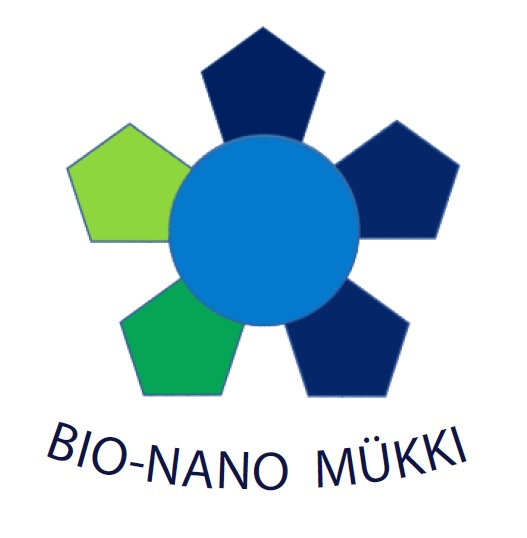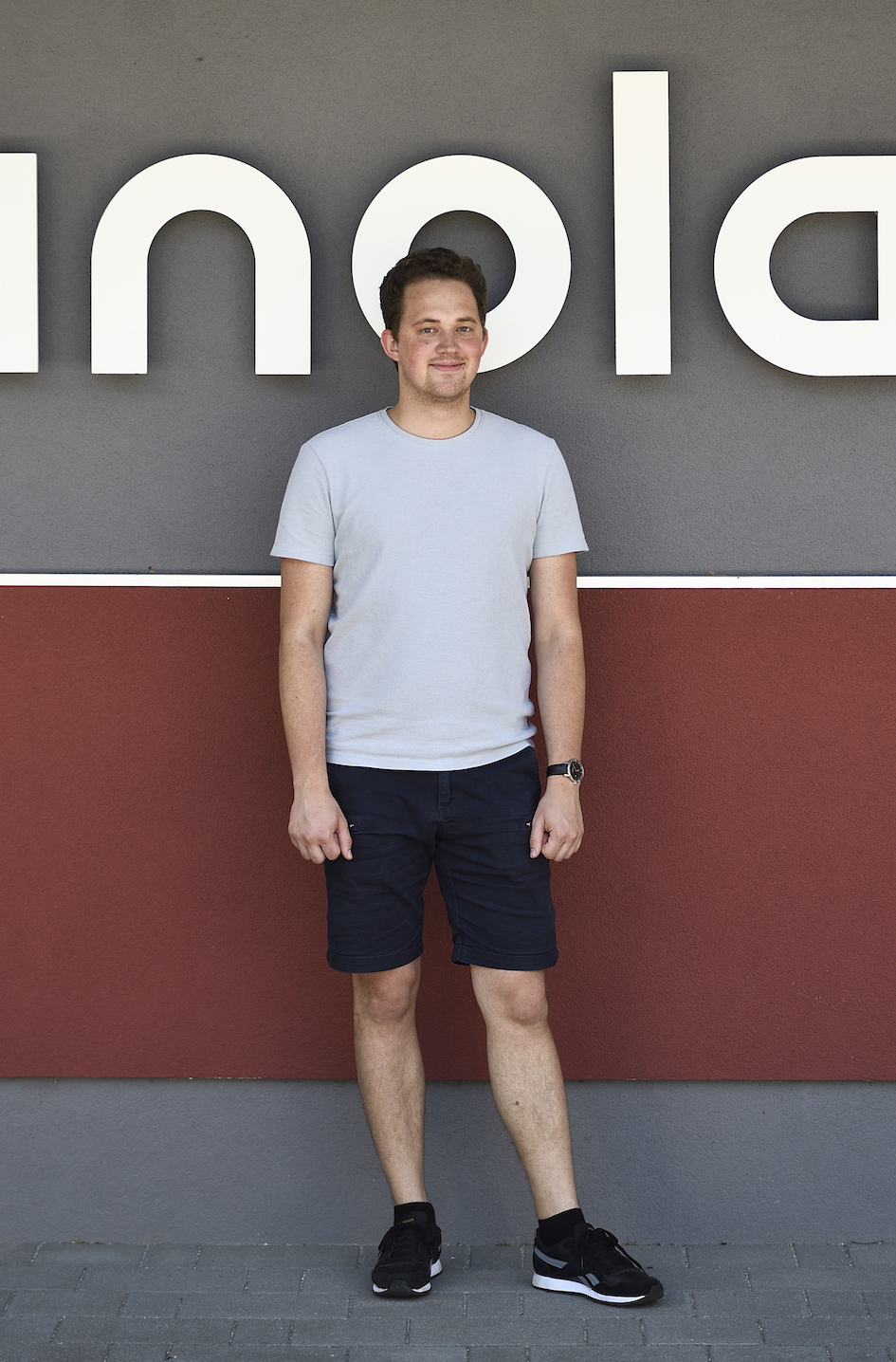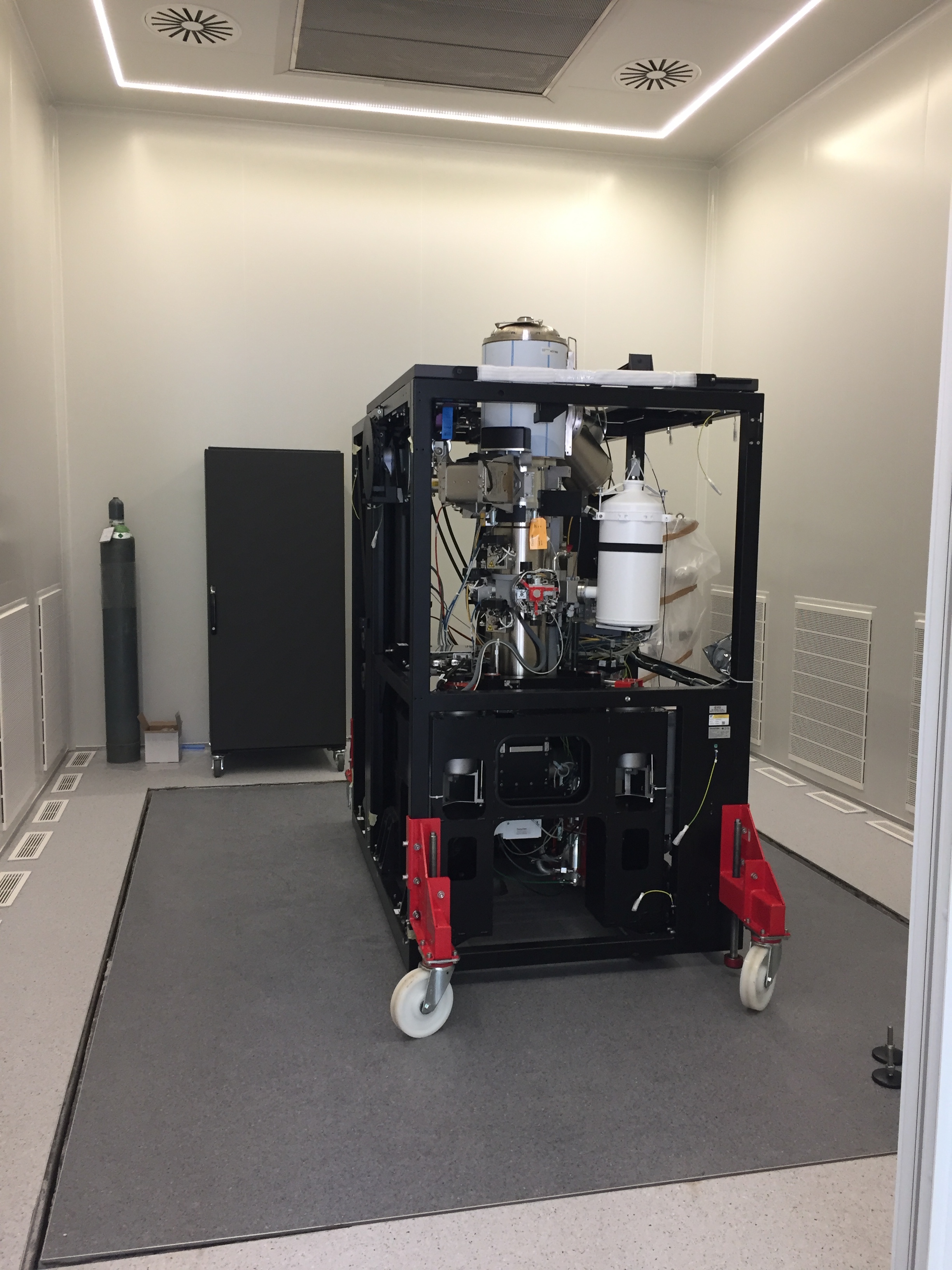|
About us |
|
|
Nanolab is the electron microscopy laboratory of the University of Pannonia (UP). We study the structures, compositions, and morphologies of solid materials, from atomic resolution to the micrometer scale, using a wide variety of electron microscopy techniques. Nanolab is part of UP's Research Institute of Biomolecular and Chemical Engineering. Nanolab staff are members of the Environmental Mineralogy Research Group. In addition to pursuing our own research projects, our facility provides service to both internal (UP) and external users. If you wish to use the services of Nanolab, please fill in this form. |
|
| News | ||
| Winter School in Mineral Sciences 2026 | ||
| Our annual meeting is approaching. This time the main theme will be "smart minerals", and we invited some well-known speakers to present rather special topics. We are looking forward to contributions from our research community, please check the program and sign up at http://mposfai.hu/TAI/tai.htm. | 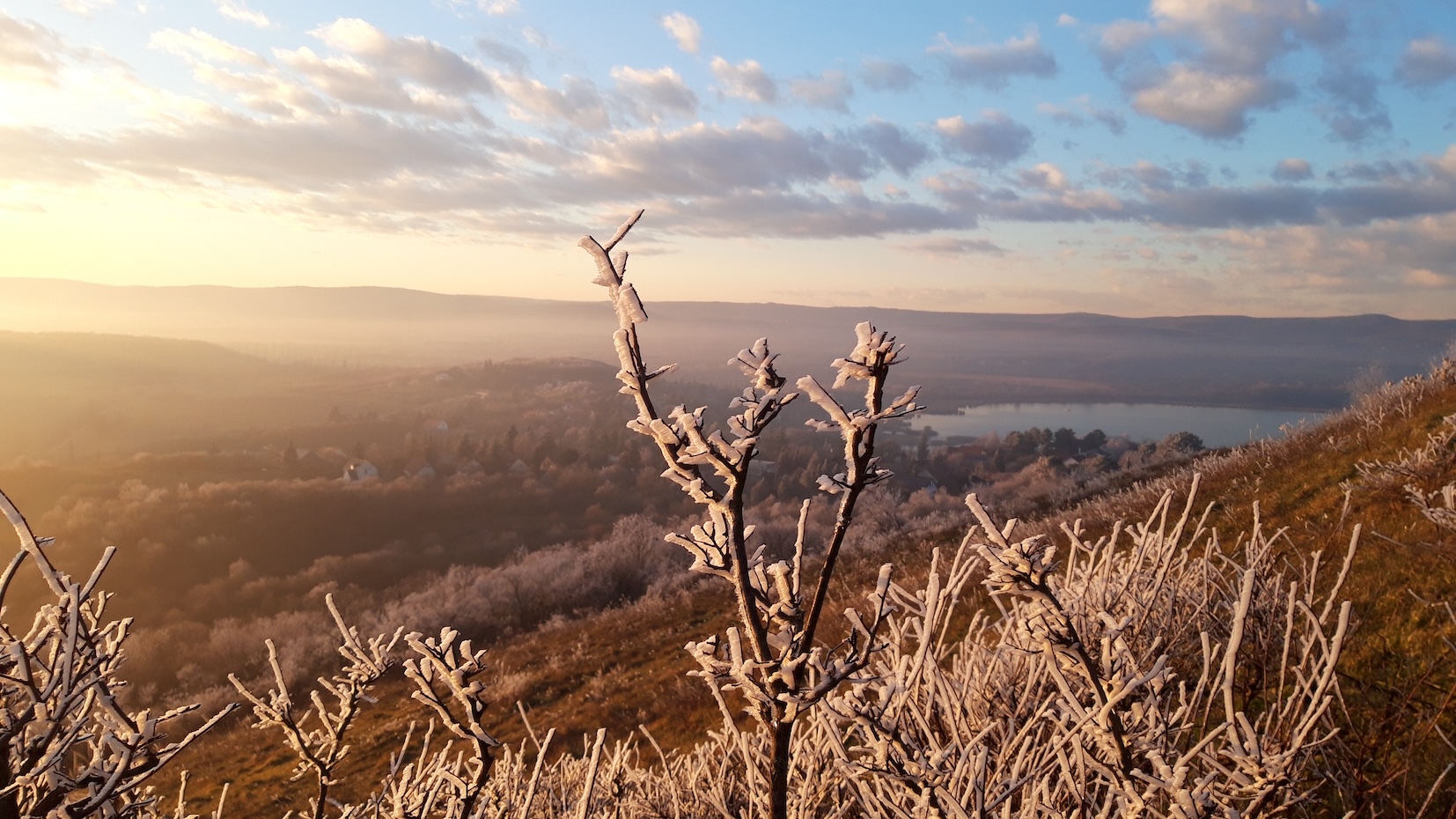 |
|
| Presentations in Münster | ||
|
The Granada-Münster Discussion Meetings (GMDMs) are organized annually by Christine Putnis and Encarnación Ruiz-Aguido. They generously let us join, and we have been delighted to attend these meetings in the last few years, since the research topics typically discussed at these meetings align perfectly with our interests. This year two of our group members attended the Münster meeting. Ilona Nyirő-Kósa presented the results of our mesocosm experiment that was designed to study the precipitation and transformations of freshwater carbonate minerals, and Kornél Rácz gave a talk on phosphate-rich particles and their cycling between algae and sediment in a lake. |
 |
|
| Active participation at Goldschmidt | ||
| Four members of our group attended the largest annual geochemistry conference, Goldschmidt in Prague. Ilona Nyirő-Kósa ("Mesocosm experiment on carbonate formation in algal blooms") and Regina Kövér ("Polyphosphate, sulphur and ACC inclusions in magnetotactic bacteria") presented posters. Kornél Rácz and Mihály Pósfai helped to staff the EXCITE booth. It was a great experience for all. |  |
|
| New graduate from Nanolab | ||
| Kong Her sucessfully graduated in the Materials Engineering MSc program, with a thesis entitled "Quantification of phosphorus associated with minerals in Lake Balaton sediment". The experimental research included synthesis of calcite with phosphate, and XPS and TEM characterization of the products. The thesis advisor was Ilona Nyirő-Kósa. Congratulations to both Kong and Ilona, and we wish Kong a great career back in Laos. | 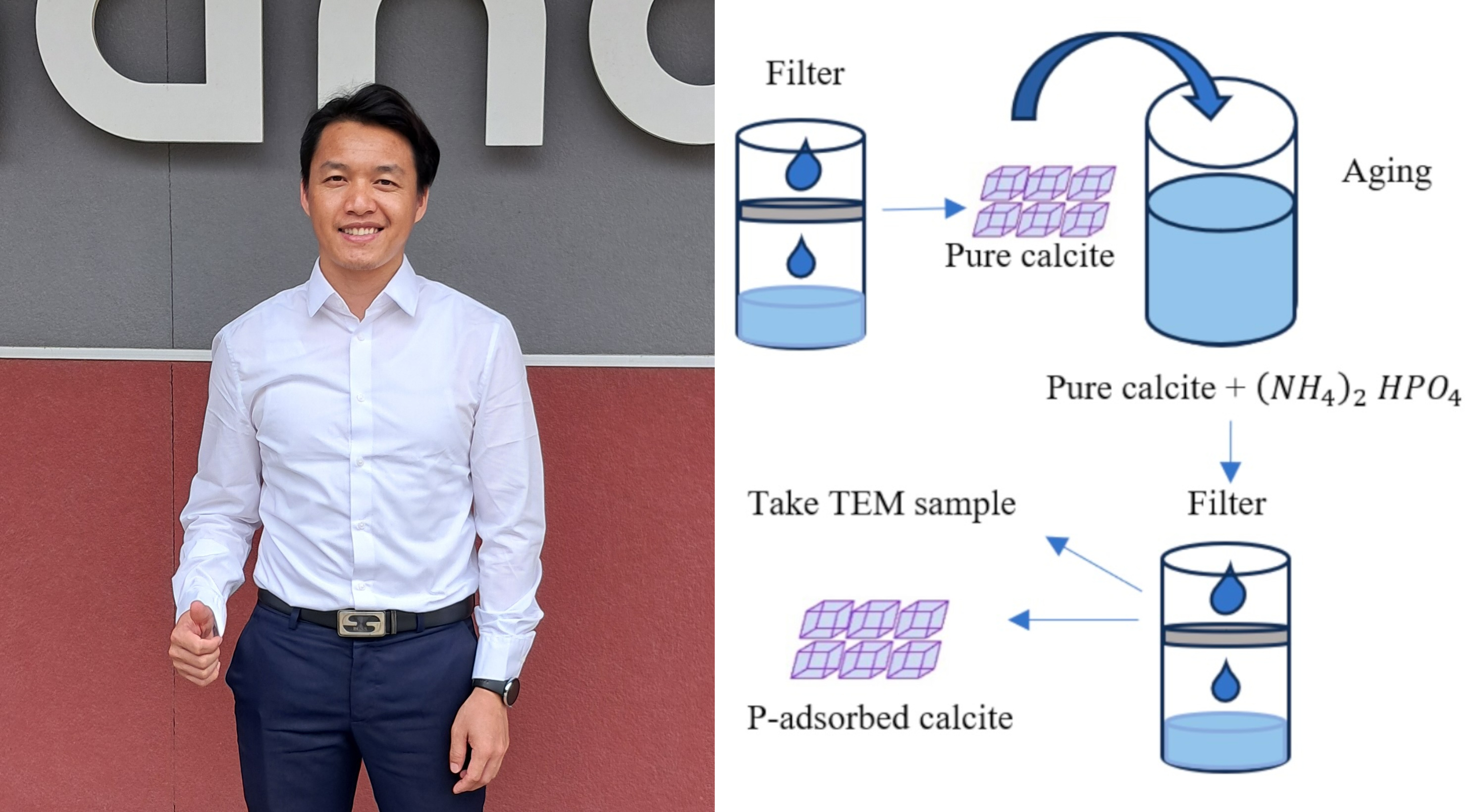 |
|
| 20th Winter School in Mineral Sciences | ||
| As in previous years, our group hosted this event that established itself as a major and lively gathering of Hungarian mineralogists, geochemists, with occasional attendees from other countries and disciplines. This year 67 participants listened to 25 talks in total. Our invited speaker was Sarah Gleeson, thanks to the "distinguished speaker program" of the European Association of Geochemistry. From our group Péter Pekker gave two talks (on cation ordering in dolomite and on electron tomography results on bacterial magnetite), and Regina Kövér presented her results on polyphosphate and other inclusions in magnetotactic bacteria. |  |
|
| Amorphous Ca-Sr-Ba carbonates - GCA paper published | ||
|
Zsombor Molnár did extensive work on amorphous carbonates, by performing hundreds of syntheses with variable ratios of Ca, Sr, and Ba. Major questions answered included (1) the composition of the precipitated phase - always more Ca-rich than the solution, (2) lifetime of the transient amorphous carbonate - when all three cations are present, there are some special cation ratios where the lifetime is orders of magnitude longer than at end-member compositions, (3) structures of both amorphous particles and crystalline products at the end of the experiment - characterized by electron diffraction and Raman spectroscopy. The results are useful for understanding the formation of amorphous Ca/Sr/Ba carbonates in nature and potentially for the synthesis of nanomaterials with specific properties. |
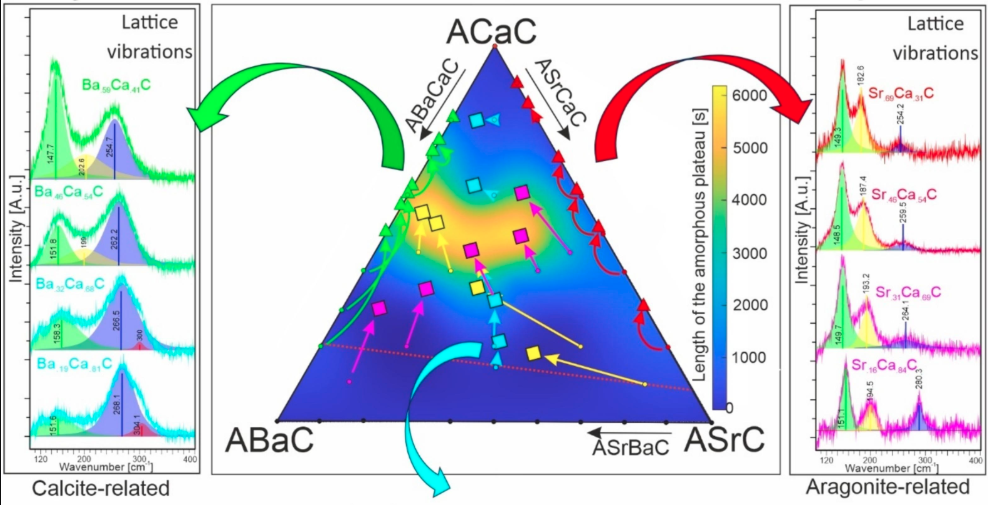 |
|
| EXCITE2.0 in full swing (2024 fall) | ||
|
As announced below, we are now part of EXCITE, a network or laboratories that provide transnational access to imaging and spectroscopy of Earth materials in 26 facilities across Europe and beyond. This fall we had a stream of onsite visitors (from Slovenia, Netherlands, Australia, South Korea, Norway) plus remote users (from the UK and Germany) who brought interesting new projects, to which we contributed with TEM measurements. We are pleased to be able to support research on Earth matters - and watch out for the results in 2025! |
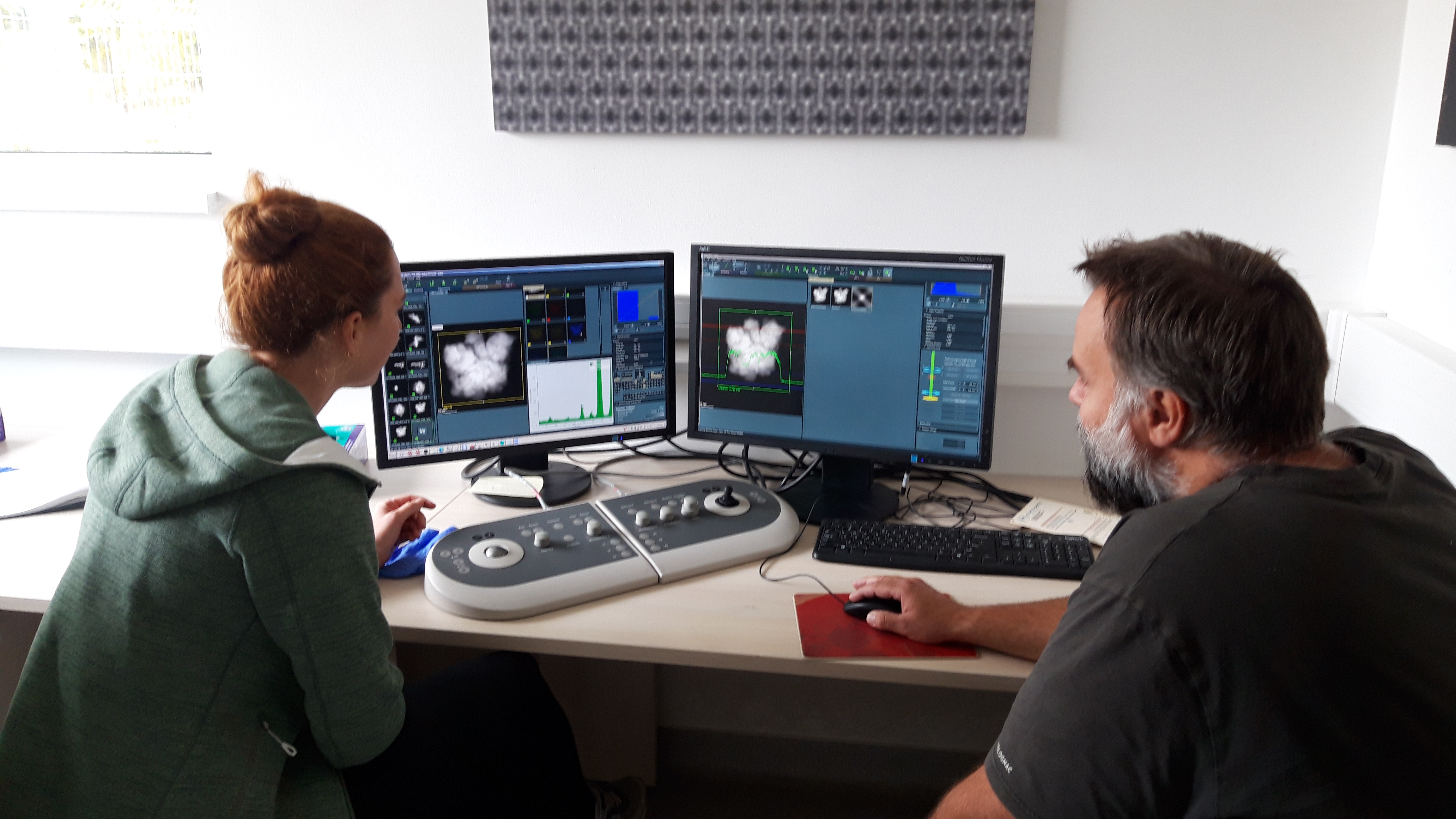 |
|
| Bolyai fellowship to Ilona Nyirő-Kósa (September 2024) | ||
| Congratulations to Ilona who won a prestigious Bolyai fellowship from the Hungarian Academy of Sciences. For three years the fellowship will help her to study the distribution of phosphorus on sediment minerals of Lake Balaton, and conditions that lead to its potential mobilization. | 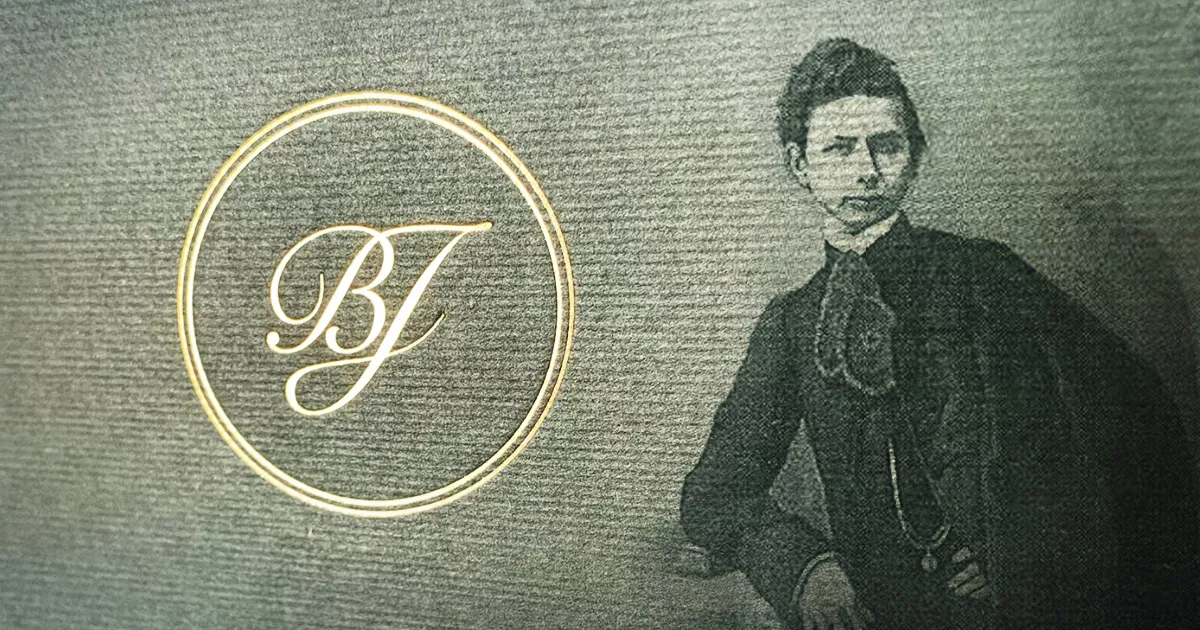 |
|
| Farewell to Zsombor and Imran (August and November 2024) | ||
|
After completing his PhD on problems related to carbonate nucleation, Zsombor Molnár accepted a postdoctoral position in the US, at the Pacific Northwest National Laboratories, Richland, WA, where he will continue to perform experimental geochemistry. After working for two years in our group on projects related to nanomaterial synthesis and characterization, Imran Uddin returned to his native India to take up a permanent position as professor of nanotechnology. We wish both of them well and lots of success in their new endeavors with one of the last pictures taken from the group with both of them still present. |
|
|
| Focus on carbonate minerals: book chapter and comment in Science published (spring 2024) | ||
|
It has been a lingering question ever since we started to look at the sediments of Lake Balaton whether the dominant Mg-bearing calcite of the sediment is the same material that is precipitated in “whiting” events, when blooming algae raise the pH and huge amounts of carbonate minerals form. In a book chapter we summarized our observations on material collected from whiting events, with the main conclusion that amorphous calcium carbonate (ACC) forms next to algae, then it converts to aragonite spindles that, in turn, convert to the final Mg-bearing calcite. Thus, at least two dissolution/reprecipitation events take place, both assisted by the presence of nm-scale flakes of the clay mineral smectite. All of this is in line with the results of our lab experiments, and provides important new insight into the formation of lacustrine carbonates. Dolomite formation is an evergreen problem for geologists. A model based on dissolution/reprecipitation cycles has been suggested by Kim et al. in Science. However, their experimental evidence for dolomite formation was based on erroneous interpretation of electron diffraction, as we have pointed out in an eLetter. |
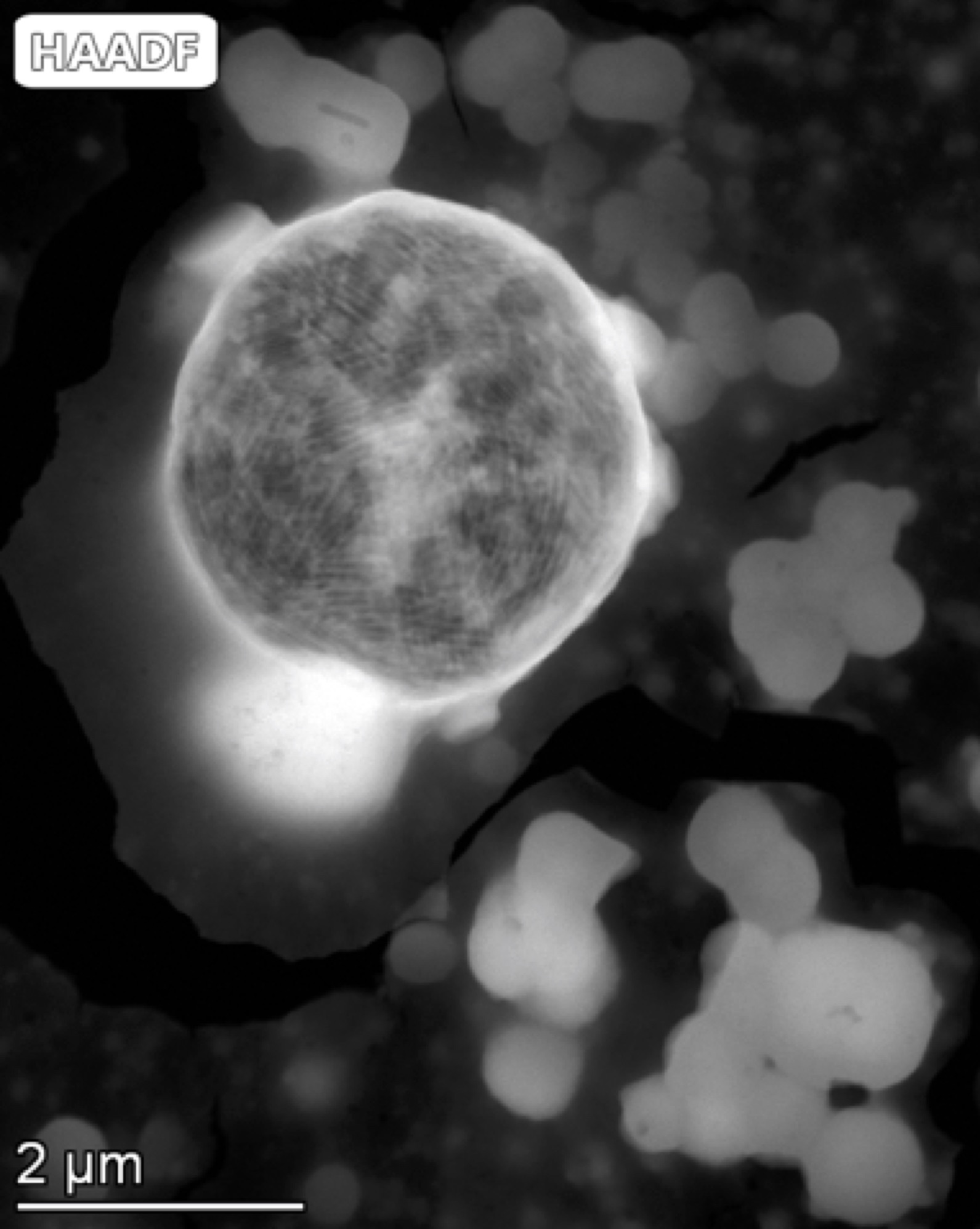 |
|
| Aragonite mesocrystals - paper in Nanoscale | ||
|
Aragonite is a polymorph of calcium carbonate, typically metastable under Earth surface conditions. Nevertheless, aragonite forms abundantly in Mg-rich aqueous environments. Zsombor Molnár tested the effect of dissolved Mg ions on the formation of aragonite: Mg-bearing amorphous calcium carbonate (Mg-ACC) formed first, then transformed into aragonite by dissolution-reprecipitation, resulting in peculiar, spindle-shaped mesocrystals. These findings provide insight into the formation of aragonite and could contribute to the understanding of important aspects of the formation of mesocrystals and hierarchically structured biogenic minerals. |
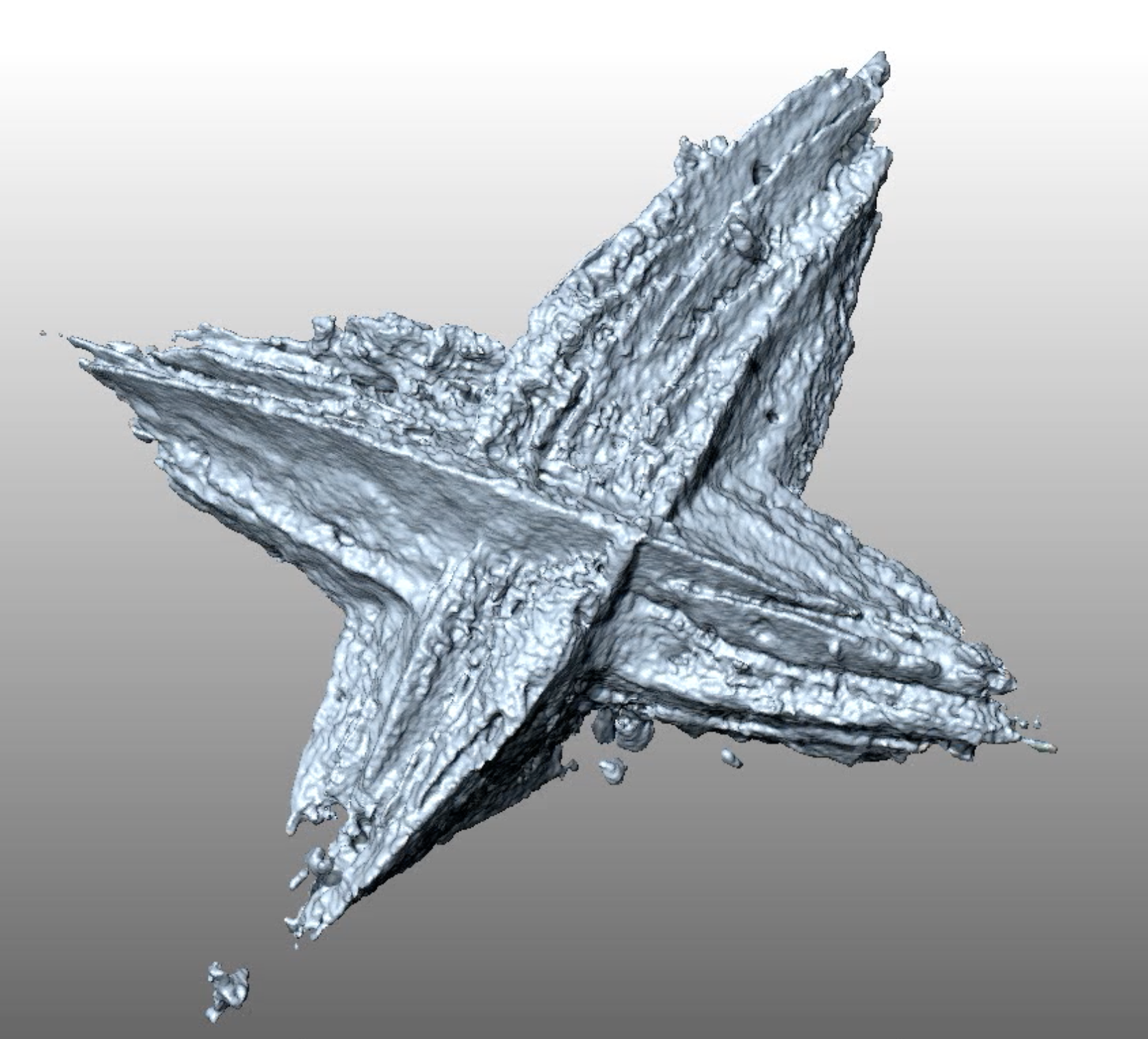 |
|
| Launch of EXCITE2: a European network for imaging Earth matters | ||
| Nanolab is part of an 18-member consortium that will allow researchers worldwide to make use of state-of-the-art electron and x-ray microscopy facilities at no cost. The project is supported by EUs Horizon program (with €14.5 million funding secured), and is led by Utrecht University. We will be excited to provide transnational access to our Talos TEM to users with whom we share common interests in environmental and earth sciences. Please see the press release. |  |
|
| Bacterial strains genetically magnetized - paper in Nature Nanotechnology with contribution from Nanolab | ||
| Magnetotactic bacteria produce intracellular magnetic nanocrystals that make them able to navigate in magnetic fields. This trait has been very difficult to transfer into non-magnetic organisms. However, by following a systematic and comprehensive research plan, microbiologists at the University of Bayreuth including Marina Dziuba, Franck-Dietrich Müller and Prof. Dirk Schüler have successfully transferred magnetosome-producing genes (about 30) from a magnetotactic bacterium into several non-magnetic strains that were then able to form intracellular magnets. Some of the newly magnetized living cells have great potential for the development of innovative diagnostic and therapeutic methods in biomedicine. Our group was involved in the TEM study of the genetically modified cells, we identified the crystal structures and compositions of various intracellular nanoparticles. | 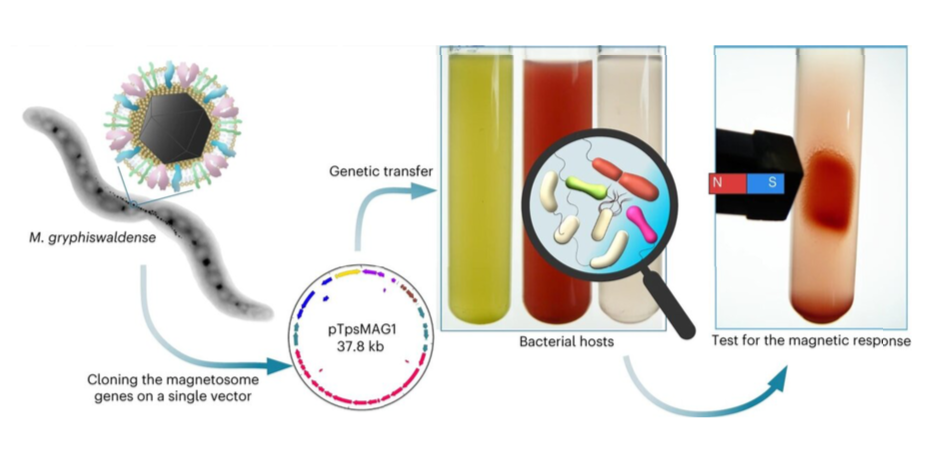 |
|
| Construction around Nanolab completed (Sept 2023) | ||
| Finally, all the noise, dust and vibrations are gone, there is a new underground parking structure, basketball and volleyball courts, running track and a new park in front of us. Plus we decorated the walls with our micrographs from the past exhibition. All TEM users are welcome in a peaceful and pleasant environment. | 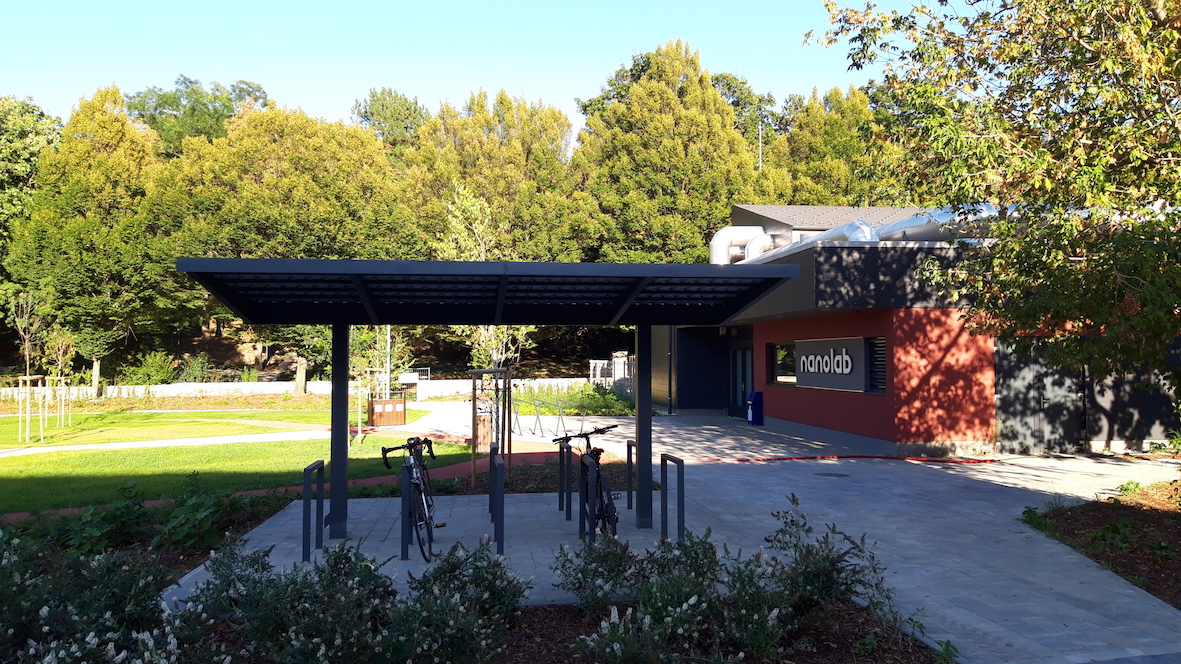 |
|
| We celebrate two new Nanolab graduates (July 2023) | ||
|
Zsombor Molnár completed his PhD (on heterogeneous nucleation of carbonates) and received his well-earned summa cum laude degree from Prof. Judit Padisák (chair of doctoral committee, left) and Prof. András Gelencsér (rector). Regina Kövér got her excellent MSc degree in chemistry. Her thesis was about the compositions of polyphosphate inclusions in algae. Congratulations on the excellent achievements and we wish Zsombor and Regina all the best in their future endeavors. |
 |
|
| It's been raining awards | ||
|
Within the last year several members of our group received scientific awards. István Dódony, our external advisor (upper left in the image) was awarded the prestigious Eötvös József Wreath by the Hungarian Academy of Sciences for his lifelong achievements in the field of mineralogy and crystal chemistry. Our other associated research collaborator, Péter Németh (upper row, center) received the Academy Award for his work on diamond nanostructures. Zsombor Molnár (upper right) won the Best Young Presenter Award at the annual meeting of the Hungarian Microscopy Society. Péter Pekker was honored by the "Outstanding Research Staff" award by the Faculty of Engineering. Péter is seen in the lower picture, flanked by the rector (left) and the dean (right). Congratulations to all! |
 |
|
|
Nanomaterials and Nanocomposites - book by Imran Uddin published |
||
|
We announce with great pleasure the issue of a book entitled “Synthesis and applications of nanomaterials and nanocomposites”, published by Springer, and edited by a member of our group, Dr. Imran Uddin, in collaboration with Dr. Irfan Ahmad. The book contains a comprehensive account of nanoparticle and nanocomposite synthesis methods, and also provides chapters on various applications. Congratulations to the authors! Imran joined our group last year from India, and is working on the biomimetic synthesis of nanoparticles (metal particles on biological substrates), producing composites that can be used for the degradation of pollutants in water. |
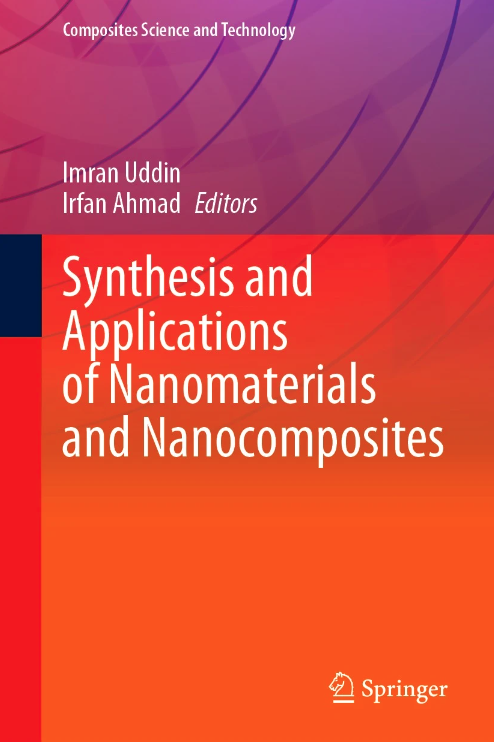 |
|
|
Mesocosm experiment, May 2023 |
||
|
For an entire month we are running an experiment in the Balaton Limnological Institute, Tihany. Right on the shore of Lake Balaton there is a “mesocosm” research facility consisting of 12 jacuzzi-sized containers in which we study the formation of lake sediments (carbonates) and the movement of phosphorus under close-to-natural conditions (i.e., similar to the lake), with the added perks of being able to control a number of parameters (including temperature, stirring, and added materials). One parameter is changed between each triplet of containers, thereby providing us with three parallel measurements. Although the experiment is still running, the daily measurements and preliminary TEM studies of solid materials suggest that we are going to be loaded with interesting data. |
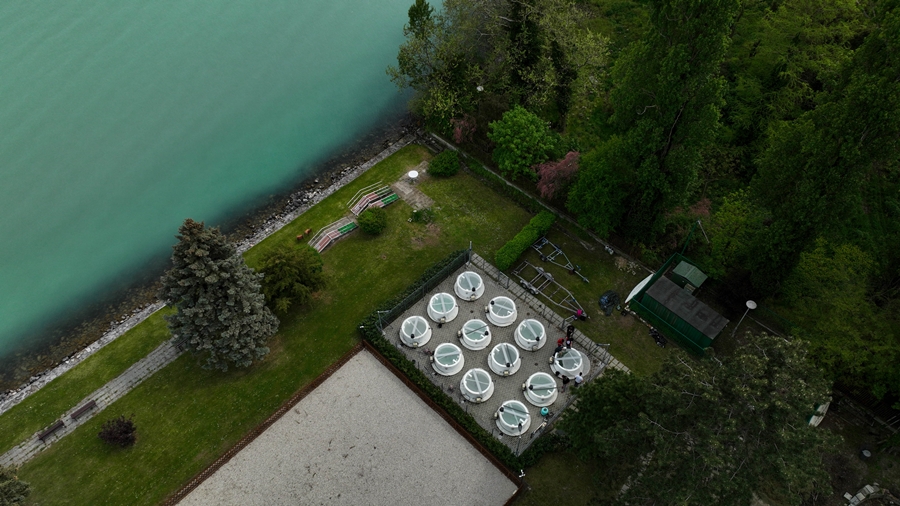 |
|
| Structure and formation of dolomite in Lake Fertő | ||
| Dolomite is a carbonate mineral with the formula CaMg(CO3)2 and an ordered arrangement of Ca and Mg atoms in alternating layers in its structure. Despite over 200 years of research, it is still not fully known how dolomite forms under Earth surface conditions, because it forms rarely today (but is abundant in older sedimentary rocks). A new study, published in Crystal Growth and Design, gives new insight into the incipient formation of dolomite in Lake Neusiedl (or Lake Fertő), a shallow alkaline lake at the border between Austria and Hungary. Electron microscopy showed that nm-scale domains of ordered dolomite occur in a matrix of Mg-bearing calcite (with disordered Ca–Mg distribution), with the two minerals sharing an identical crystallographic orientation. The nanoscale dolomite domains probably formed as a result of fluctuating chemical conditions in the lake, by dissolution of Mg-bearing calcite and reprecipitation of the thermodynamically more stable but kinetically hindered phase, dolomite, in nanoscale pockets that are delimited by clay minerals. | 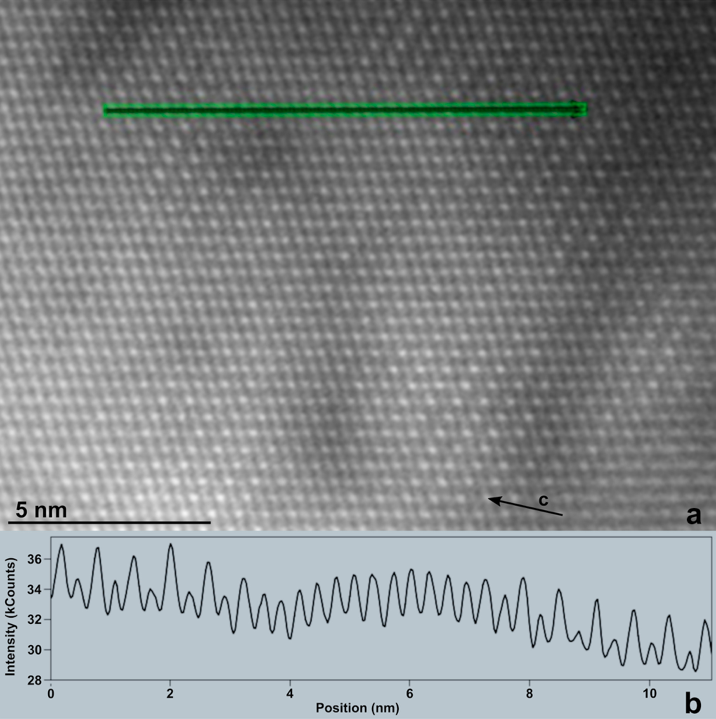 |
|
| The art of science - exhibition of TEM images | ||
|
We embark on a new adventure by opening a "fine-art" exhibition displaying various types of transmission electron microscopy images. The goals are to show the inherent visual beauty of nanoscale objects and phenomena, and to inform the general public about our research. "The art of science in electron microscope images" will open at 5 pm on February 14, in the Great Hall of Univ. Pannonia, Veszprém, and can be seen until February 28. |
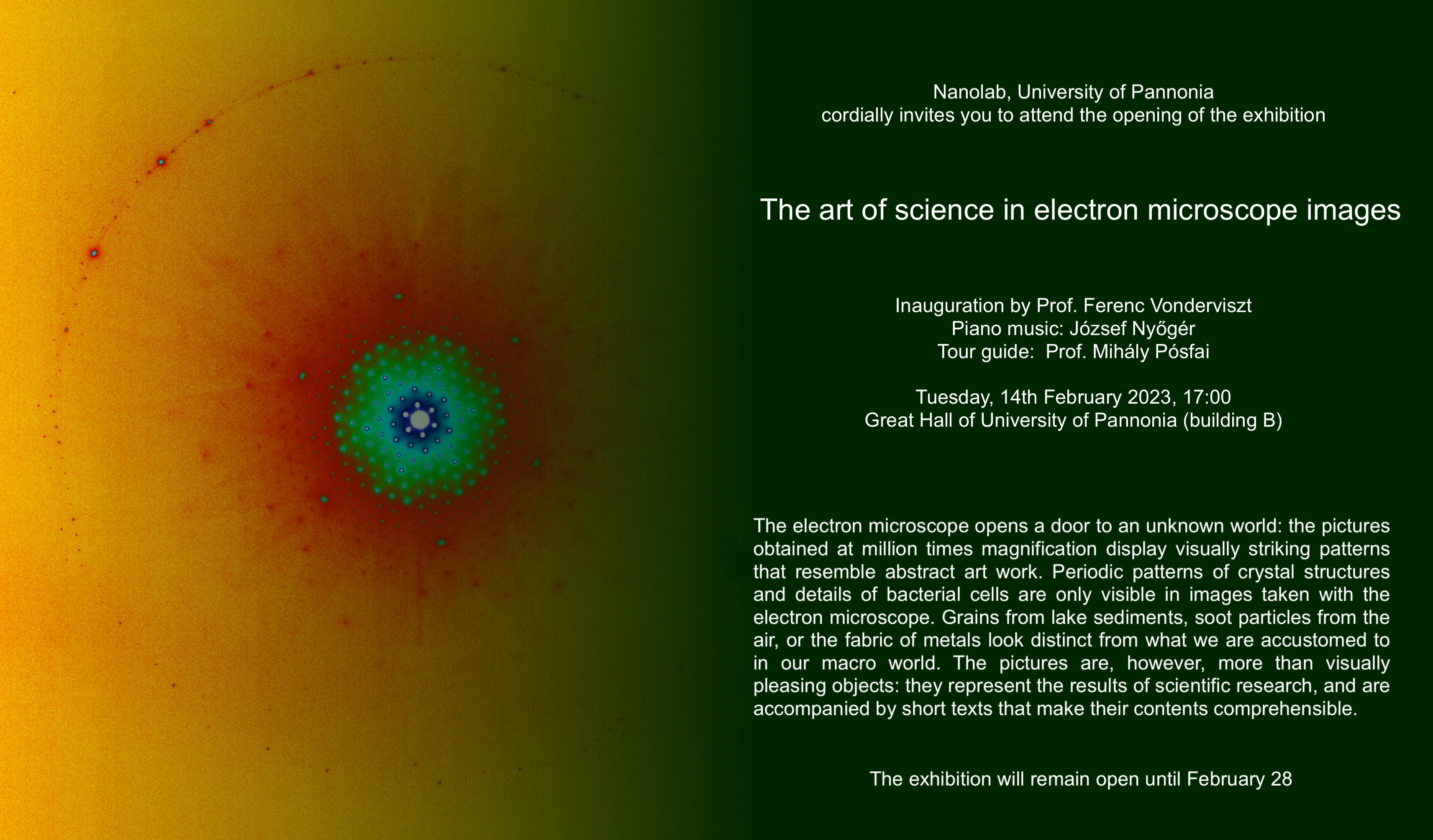 |
|
| Transformations of amorphous calcium carbonate | ||
| Amorphous calcium carbonate (ACC) seems to be everywhere but details of its transformation into the stable calcium carbonate polymorphs (calcite and aragonite) remain elusive. Zsombor Molnár's experimental study (published in Geochimica et Cosmochimica Acta) shows how the stability and conversion of ACC are affected by magnesium and phosphate ions, as well as by pre-existing silicate surfaces. As in our former studies, the magic of smectite clay in making rapidly calcite is again revealed, with possible consequences for diagenesis, carbon sequestration and phosphorus cycling. |  |
|
| 18th Winter School in Mineral Sciences (Feb 10-11, 2023) | ||
| This year our traditional winter school took place at the University of Pannonia in Veszprém. With 70 registered participants and 21 talks, we had an intense one-and-a-half-day program, with lively discussions. Most labs active in mineralogical research in Hungary were represented, plus we got glimpses into theoretical chemistry, solid state physics, astrophysics, archaeometry and nanotechnology. Thank you to all speakers and participants for making this event a party of mineral sciences. | 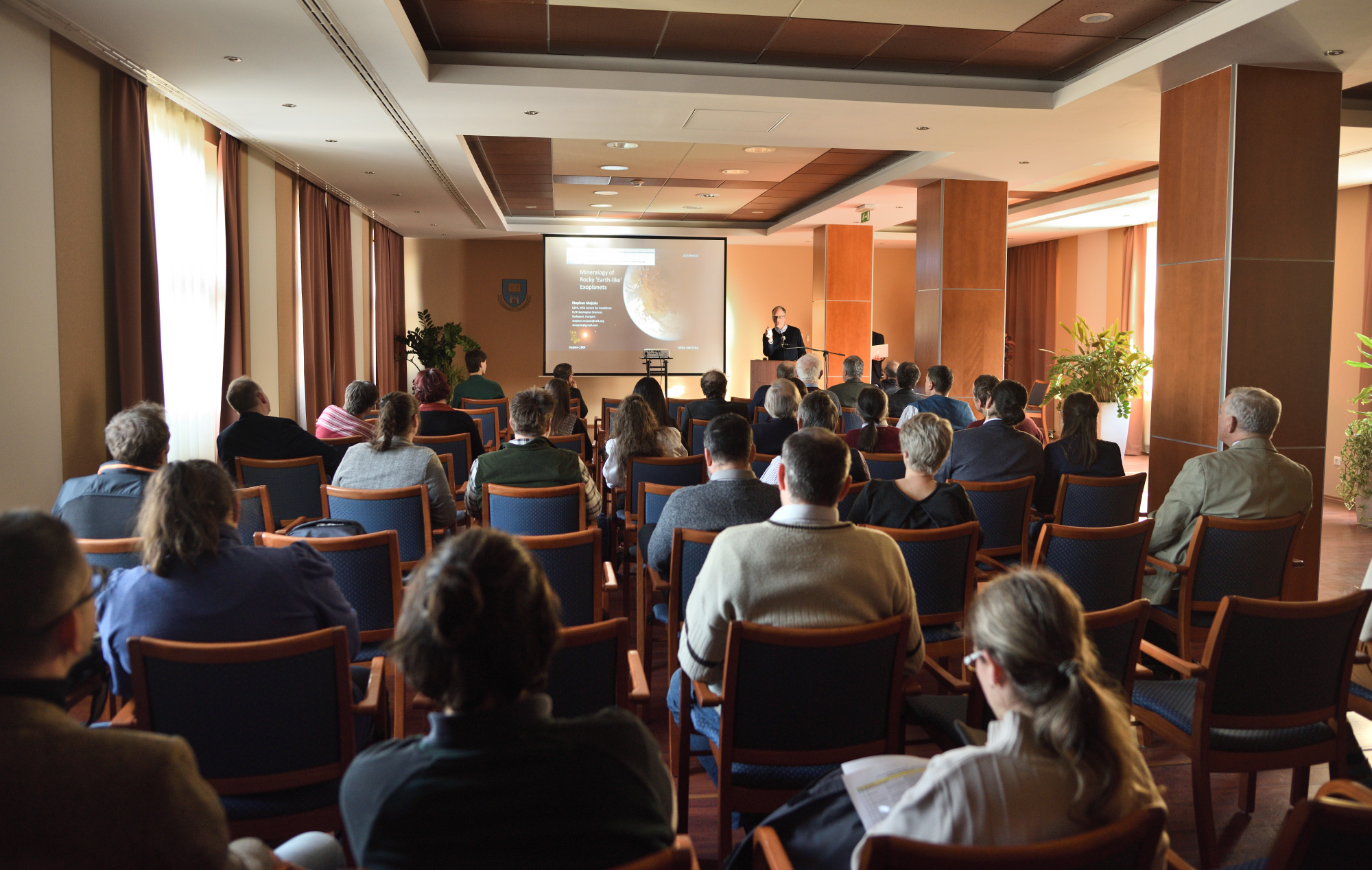 |
|
| Sediment formation in Lake Balaton | ||
|
Lake Balaton is a large, shallow, calcareous lake that can be regarded as a “carbonate factory”. Over a two-year period we measured the amount and type of minerals delivered into the lake by inflows and rain, and estimated the amount of carbonates precipitating from lakewater. We found that almost 90% of current sediment accumulation consists of carbonate minerals that form within the lake, the composition of which reflects environmental changes: at low water level their Mg content increases, and even protodolomite can form. |
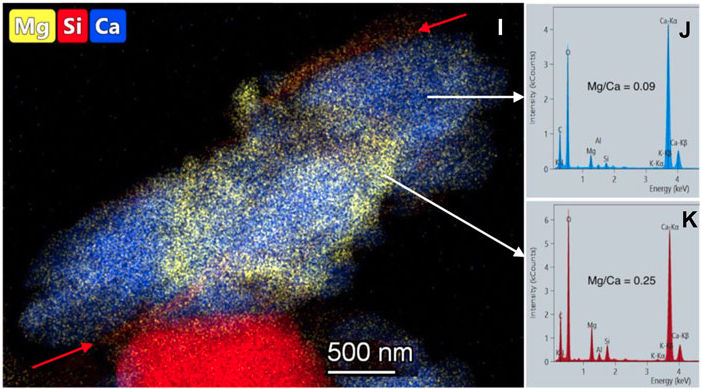 |
|
| Magnetic aerosol particles emitted by cars | ||
| With Ilona Nyirő-Kósa as lead author, and contribution from our MSc alumnus Faizan Ahmad, a new paper was published in Atmospheric Environment X. The study discusses the nanoscale structural and chemical properties of ferrimagnetic particles emitted by gasoline-powered cars. Both tailpipe emissions and particles from braking were analyzed and compared with magnetic particles collected from ambient urban air. It appears that tailpipe emissions constitute an important source of magnetite nanoparticles (wrapped in carbon layers) that occur in the urban air. | 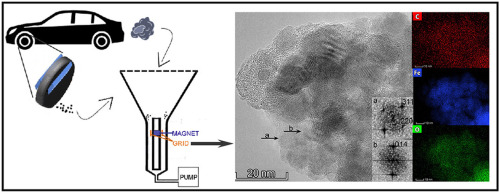 |
|
| Carbonate Workshop (July 4-5, 2022) | ||
| Geochemistry and Mineralogy of Calcium Carbonate Polymorphs - with this title Péter Németh organized an international workshop in Veszprém, at the Regional Centre of the Hungarian Academy of Sciences. Several well-known experts of carbonate geochemistry and crystallography attended, either personally or through zoom. Our group enthusiastically joined, with Péter Pekker, Zsombor Molnár and Mihály Pósfai presenting their results on protodolomite, heterogeneous carbonate crystal nucleation, and carbonate formation in Lake Balaton, respectively. We expect that new joint research projects will bud from the event. | 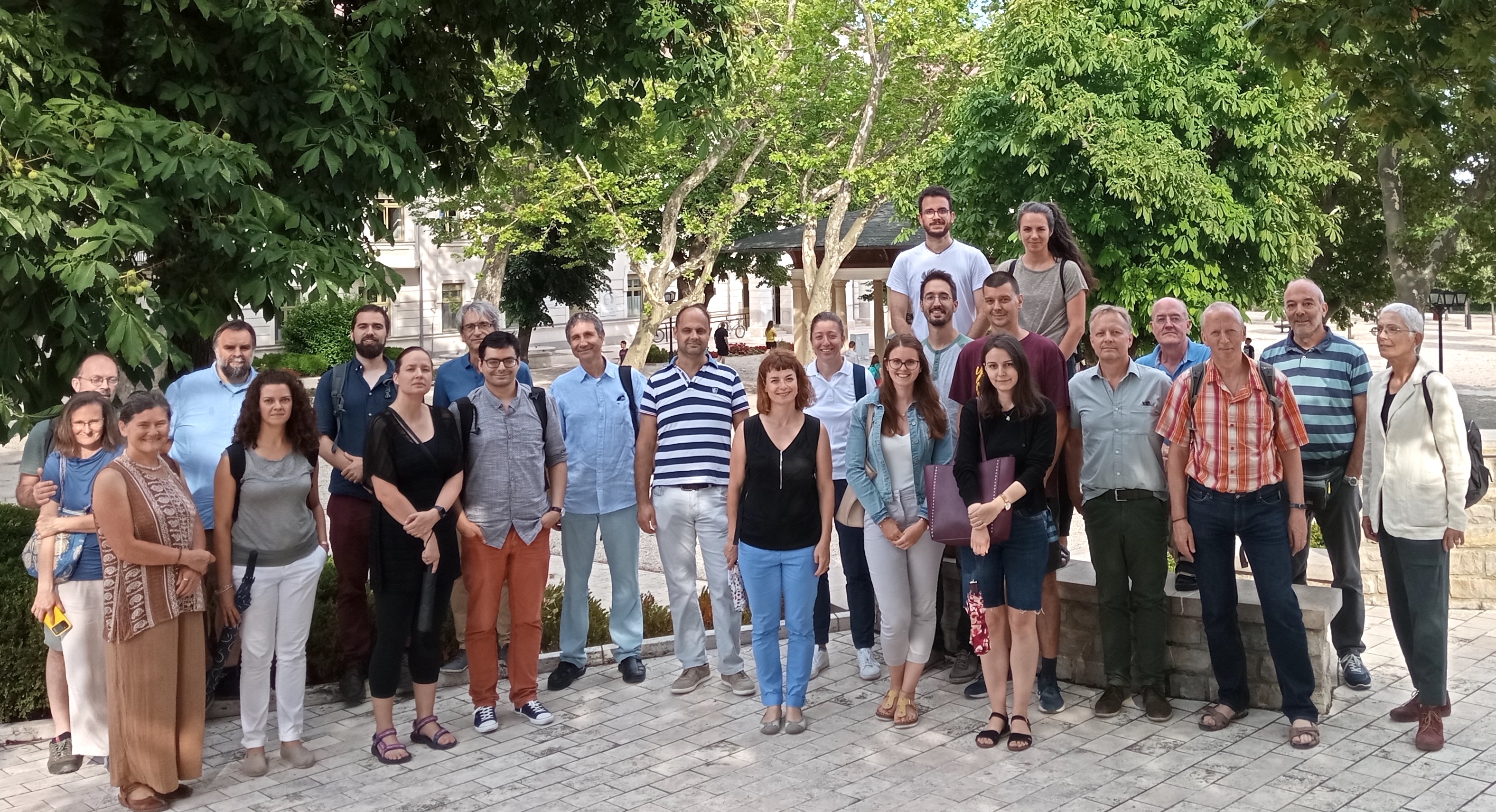 |
|
| Construction around our lab (June 2022) | ||
| In preparation for being the "cultural capital of Europe" in 2023, at the moment the city of Veszprém looks like a giant construction site. An underground parking structure is being built right in front of Nanolab. Apart from a few power interruptions, so far the banging/digging have not affected our TEM studies. We keep our fingers crossed. | 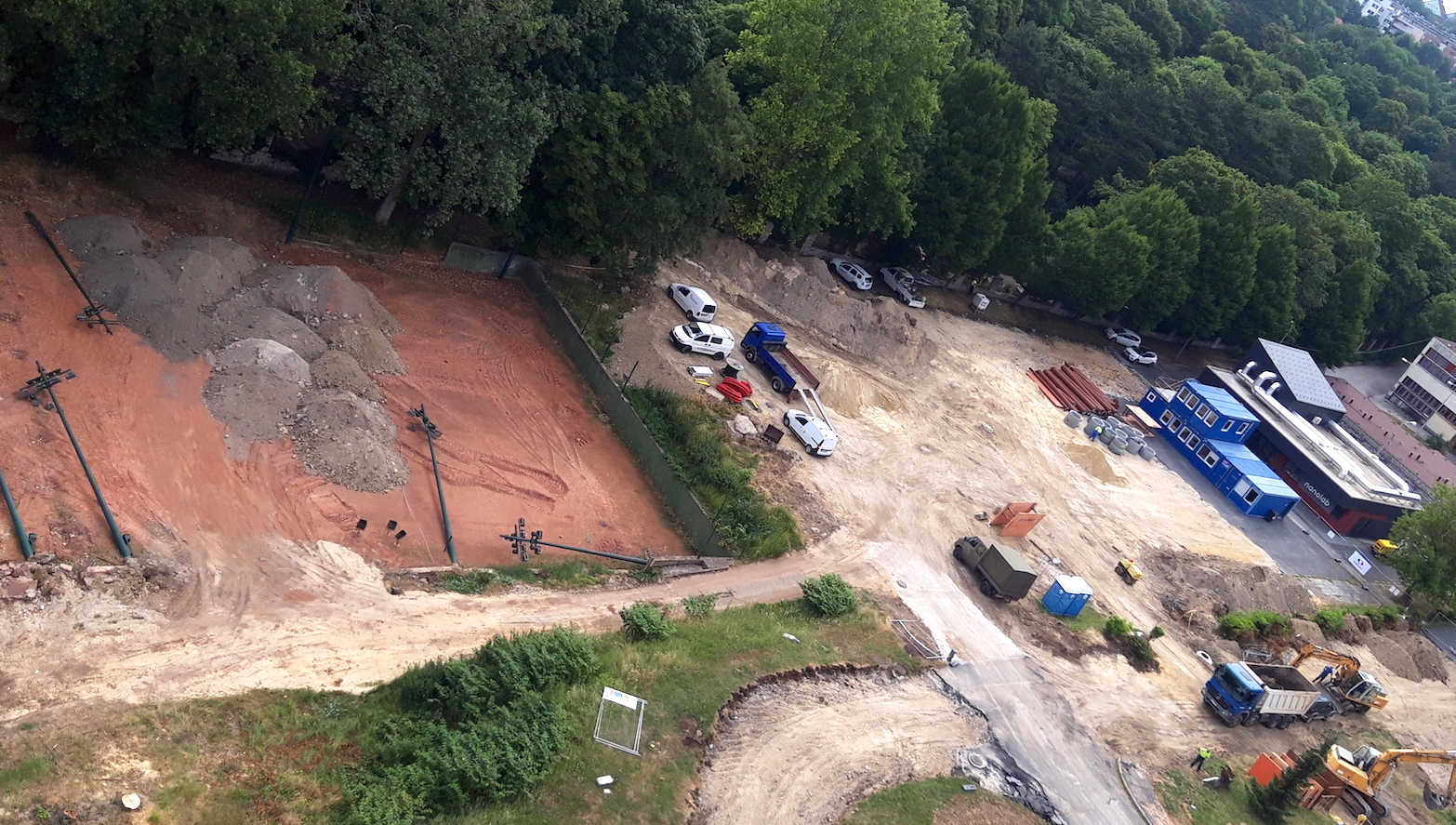 |
|
| New grant supports the Environmental Mineralogy Research Group (May 2022) | ||
| The Environmental Mineralogy Research Group successfully applied to the Eötvös Loránd Research Network for support for a five-year period starting on July 1st 2022. The grant will allow us to start new, interdisciplinary lines of research. We will study the structures and formation of specific biominerals, and the roles of microbe-mineral interactions that seem to be important in phosphorus cycling in lakes. | 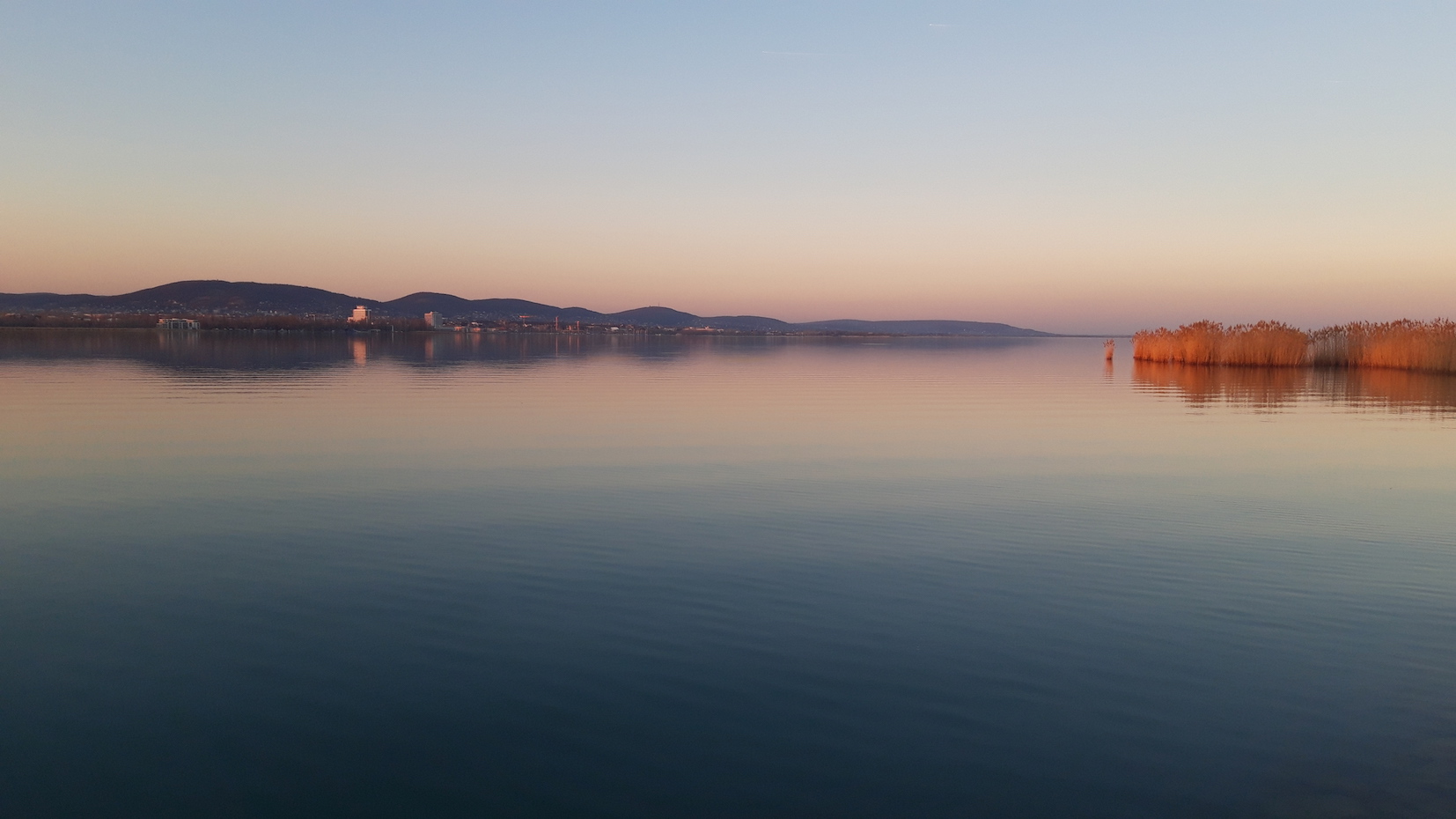 |
|
| Exotic new types of biomineralization | ||
|
Two new studies have been published with contribution from our lab, both of which report on previously unknown types of biominerals. Research led by Yeseul Park and Damien Faivre (CEA Cadarache, France) showed that a magnetotactic bacterium produces copper sulfide particles in a rather unusual location, in the periplasmic space, when cultured in copper-rich media. Another paper by Laurence Garvie (ASU), with contribution from Péter Németh, discusses the precipitation of hydrated amorphous calcium carbonate by a peculiar organism, the dog vomit slime mold. |
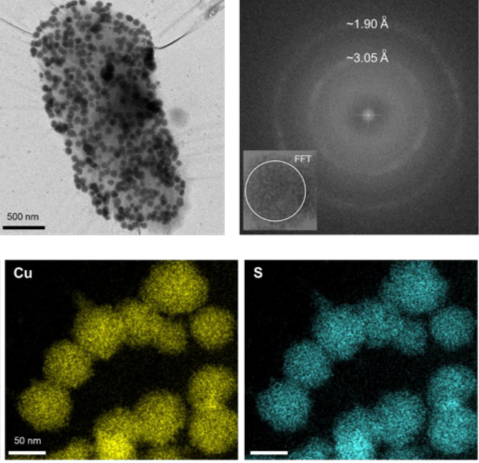 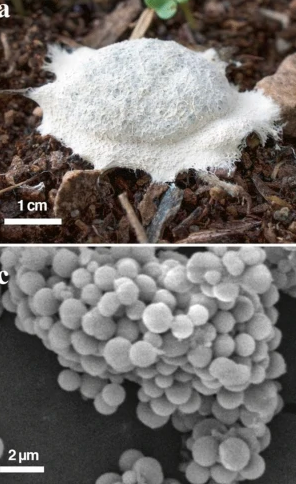 |
|
| Winter School in Mineral Sciences Jan 28-29, 2022 | ||
|
The Winter School in Mineralogy is a mixture of workshop and conference, a two-day event we have organized every January for the last 17 years. With online meetings becoming the norm, our school turned quite international. This year our special theme will be "Nanoscale phenomena with global consequences". Please check the developing program and you are very welcome to attend. |
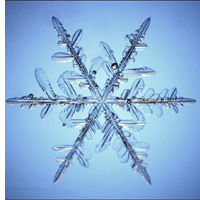 |
|
| Two students from Nanolab graduate (July 2021) | ||
| Congratulations to Anett Lázár (MSc, chemistry, right in the picture) and Regina Kövér (BSc, chemistry, pictured on left) on receiving their degrees! Anett synthesized and studied transformations of a hydrated calcium carbonate mineral, ikaite (under supervision by Péter Németh), while Regina studied composition, structure and environmental signature in fish otoliths (supervised by Zsombor Molnár and Mihály Pósfai). Both produced excellent theses and won awards in student competition. Good luck in your future research work. | 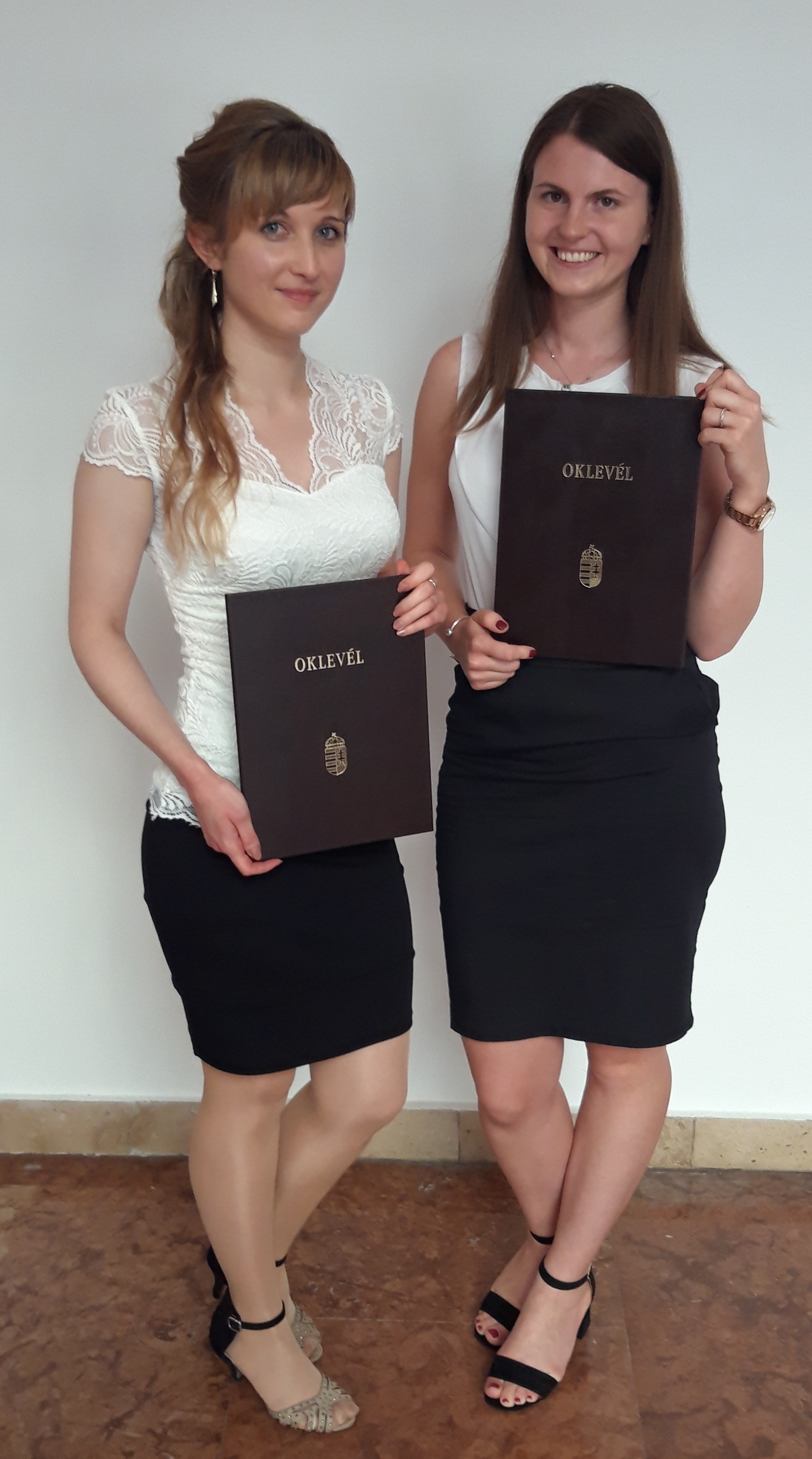 |
|
|
Magnetite mesocrystals and a new crystal growth mechanism
|
||
| With contribution from Nanolab (electron tomographic reconstruction of 3D nanomorphologies), a new paper by Lucas Kuhrts et al.: "Wettability of magnetite nanoparticles guides growth from stabilized amorphous ferrihydrite" was published in JACS. In a magnetite synthesis procedure mimicking biomineralization, an amorphous iron oxide precursor is first stabilized by polyarginine. When crystalline magnetite nuclei form, they are wetted by the still present amorphous material, making the crystals grow. Since the wetting (the contact angle) is pH-dependent, by varying the pH either simple single crystals or cauliflower-looking mesocrystals are produced. While these results explain the formation of the strange magnetite mesocrystals, they also provide a new tool for controlling crystal growth from solution. | 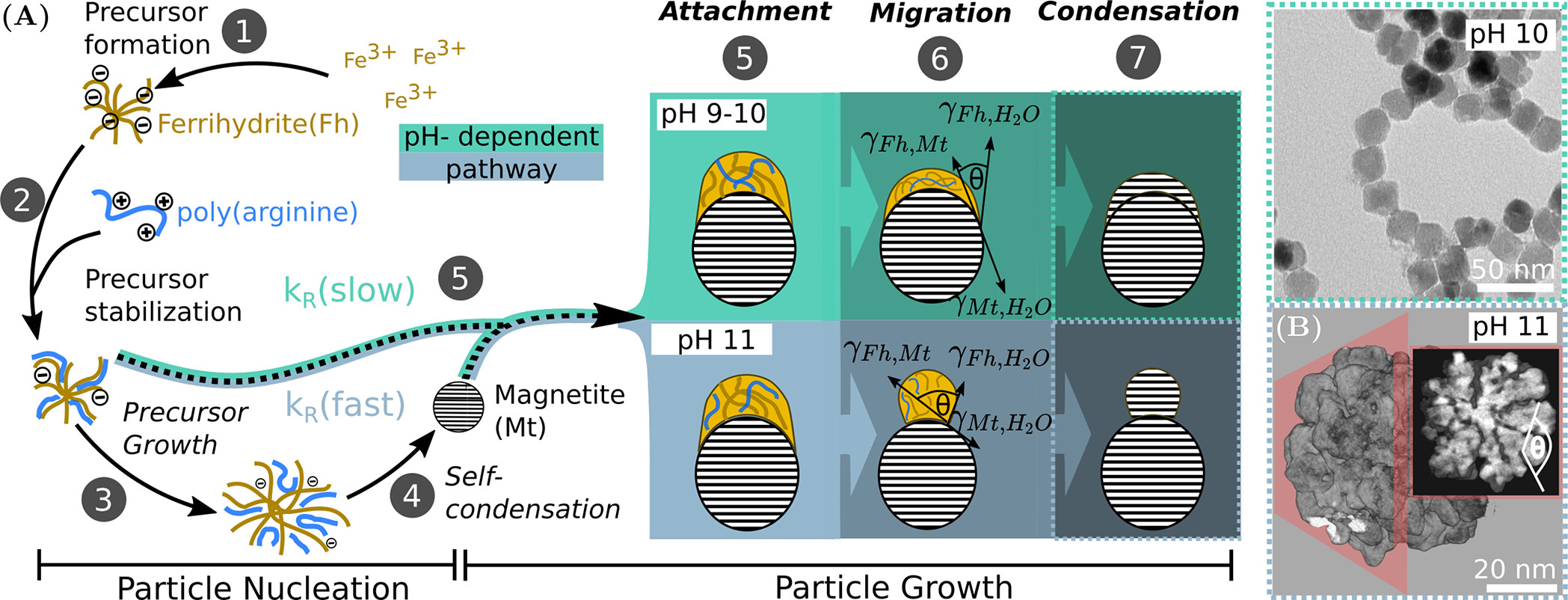 |
|
| Smectite clays affect carbonate precipitation and aging | ||
| An important new paper by the EnvMin Research Group has been published. Zsombor Molnár et al. (EPSL) experimentally studied calcium (magnesium) carbonate precipitation in the presence of clay minerals. Smectite accelerates calcite formation, and when a Mg-bearing solution is aged in its presence, protodolomite forms. Interactions between smectite and carbonates may be important in a number of environments, including lakes, oceans, soil and sediments. | 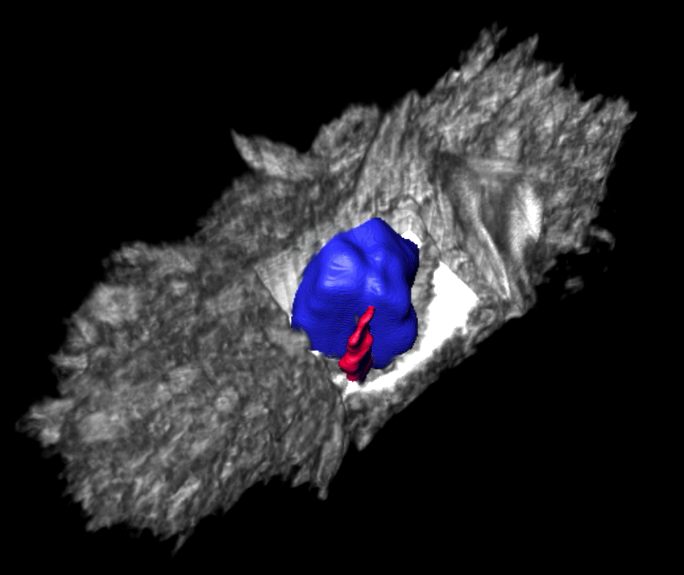 |
|
| New HRTEM paper on beam-sensitive kaolinite | ||
|
With the contributions of members of the EnvMin Research Group, a study on the structure and morphology of kaolinite nanoscrolls has been published (Makó et al., Appl. Clay Sci.). We are proud of this paper because it is the first from Nanolab using some not-so-conventional TEM techniques: low-dose imaging and electron crystallographic image processing, in order to obtain fine structural details from this extremely beam-sensitive material. |
 |
|
| Six-legged visitors | ||
| In general, we are happy to host visitors but we had some of the unpleasant types recently: stink bugs in winter and ants in summer. However, one morning a beautiful stag-beetle welcomed us on the wall, and today a large mantis paid a visit. |  |
|
| Three students from Nanolab graduate, congratulations! (June 2020) |
|
|
|
Three theses prepared by contributions from Nanolab were defended, all receiving "excellent" grade: Winfred Nyokabi (env. sci. MSc): Potential disolution of calcium carbonate shells in a freshwater environment; Faizan Ahmad (env. sci. MSc): Properties and possible sources of magnetic nanoparticles in the urban atmosphere; Bálint Tóth (chemistry BSc): Characterization of individual aerosol particles generated by household waste burning. Congratulations to our fresh degree-holders, their thesis supervisors and all members of the group who contributed. We wish Winfred, Faizan and Bálint well in their future endeavors. (From left to right in the group photo: Zsombor Molnár, Kornél Rácz, Winfred Nyokabi, Faizan Ahmad, Ilona Nyirő-Kósa, Mihály Pósfai, Péter Pekker; in separate photo: Bálint Tóth; among the supervisors-contributors, missing from the photo is Csilla Balogh, Balaton Limnological Institute, Tihany) |
||
| Cave bacteria making carbonates - paper using Nanolab results published in Sci. Rep. (May 2020) | ||
|
Bacteria cultivated from Baradla Cave are capable of stabilizing amorphous carbonate at room temperature, and thus provide an opportunity for an analysis of this peculiar carbonate form and for a better understanding of carbonate formation. Amorphous carbonate may be common in temperate caves and its occurrence is directly linked to bacterial activity. This material presumably influences the geochemical signal recorded in cave sediments and thus the conclusions of past environmental and climate changes. The results by Nóra Enyedi, Péter Németh and coworkers rely heavily on data obtained using the Talos in Nanolab. |
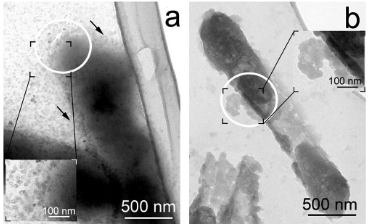 |
|
|
Nanolab closed for visitors because of the coronavirus situation (March-April 2020) |
||
|
From March 12 until further notice the Nanolab is closed for external users. We continue to do measurements; however, since only one staff member is allowed in the lab at any time, our capacity is reduced.
|
||
| Guest from Australia (January 2020) | ||
| Professor Silvia Frisia from the University of Newcastle spends some time in Nanolab. Dolomite microstructures, cave carbonates and contemporary stromatolites are on the plate. | 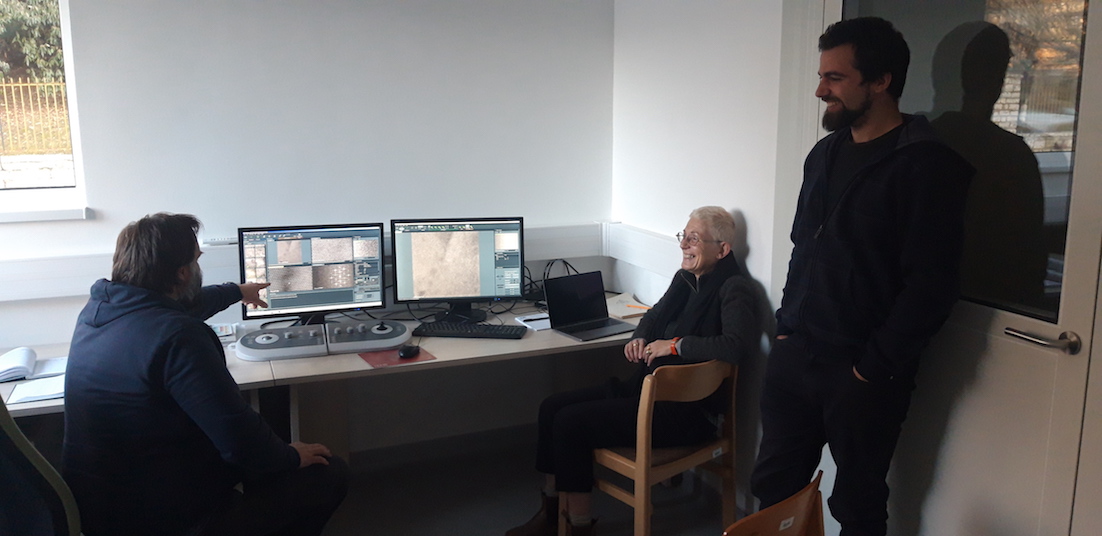 |
|
| Summer internship of three students, launching new projects in biomineralization and atmospheric aerosol science, our research portfolio gradually widens. |  |
|
| Guest from Potsdam |  |
|
| Lucas Kuhrts PhD student spends two weeks here to get trained in HAADF electron tomography. | ||
| Nanolab inauguration and electron microscopy mini-conference - October 2, 2018 | 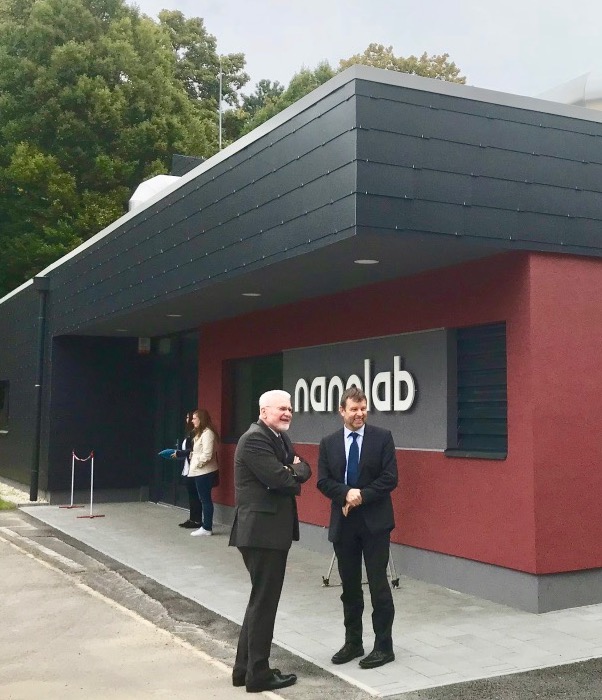 |
|
| Official opening of Nanolab. In the afternoon famous electron microscopists gave lectures: Peter Buseck, Rafal Dunin-Borkowski, Aleksander Recnik, Béla Pécz and Péter Németh. | ||
| A bunch of electron microscopists who - at some point in their career - have been associated with Peter Buseck's group at Arizona State University (from left to right: István Dódony, Michael Czank, Peter Buseck, Mihály Pósfai, Péter Németh, Rafal Dunin-Borkowski). | 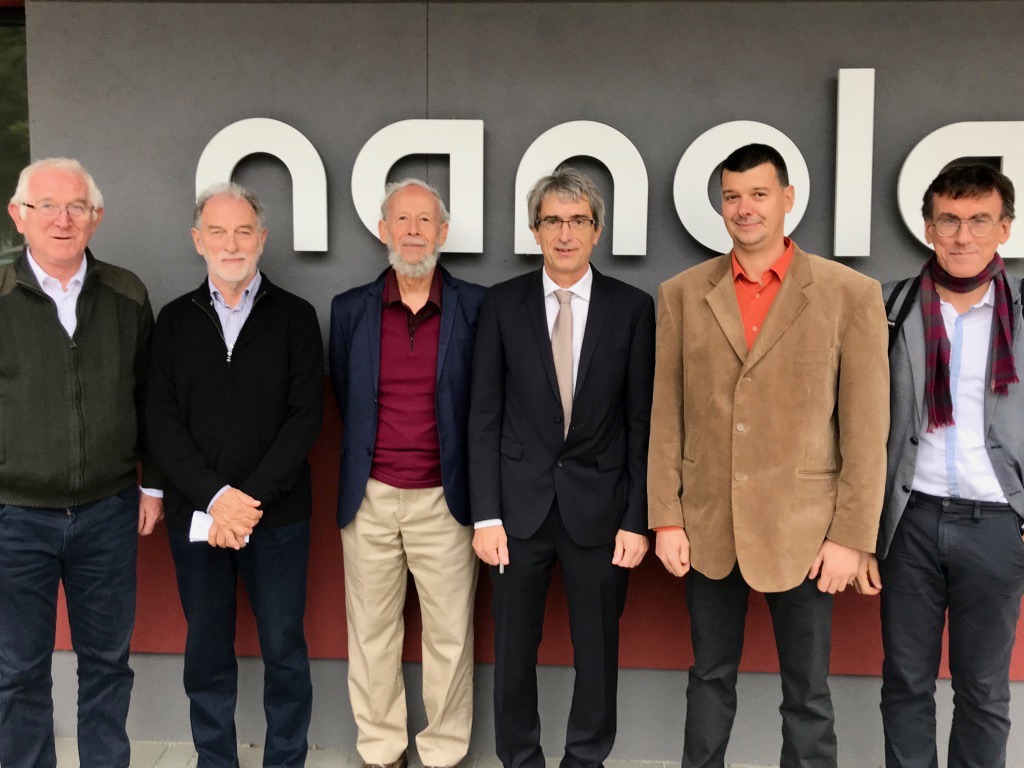 |
|
|
Nano-picnic, Sept 2018 |
|
|
| Before the official inauguration, the staff of the University of Pannonia was given a tour of the new lab - along with a picnic including beer and some food. | ||
| User training started | 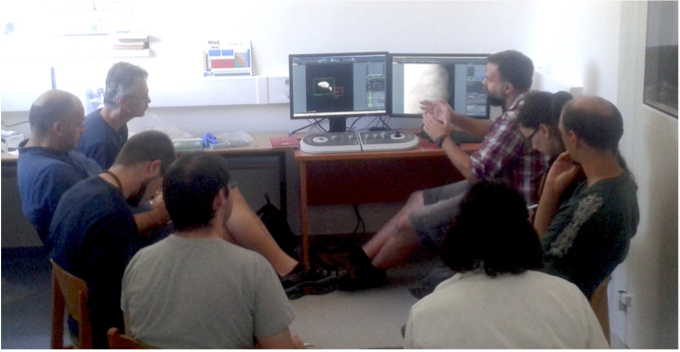 |
|
| All through the summer several 3-day training sessions were held for prospective new users - we hope there will be many of them. | ||
|
The Talos arrived! |
|
|
|
The Talos TEM arrived! There was some panic (apparently, the doorstep was a bit too high), but the instrument is now in its place in the brand new Nanolab building, and awaiting installation. |
||
| Apreo SEM is working - December 2017 | ||
| The Apreo SEM produced the first images, and the EDAX energy-dispersive system (EDS) and the electron backscattered diffraction (EBSD) detector also arrived. | 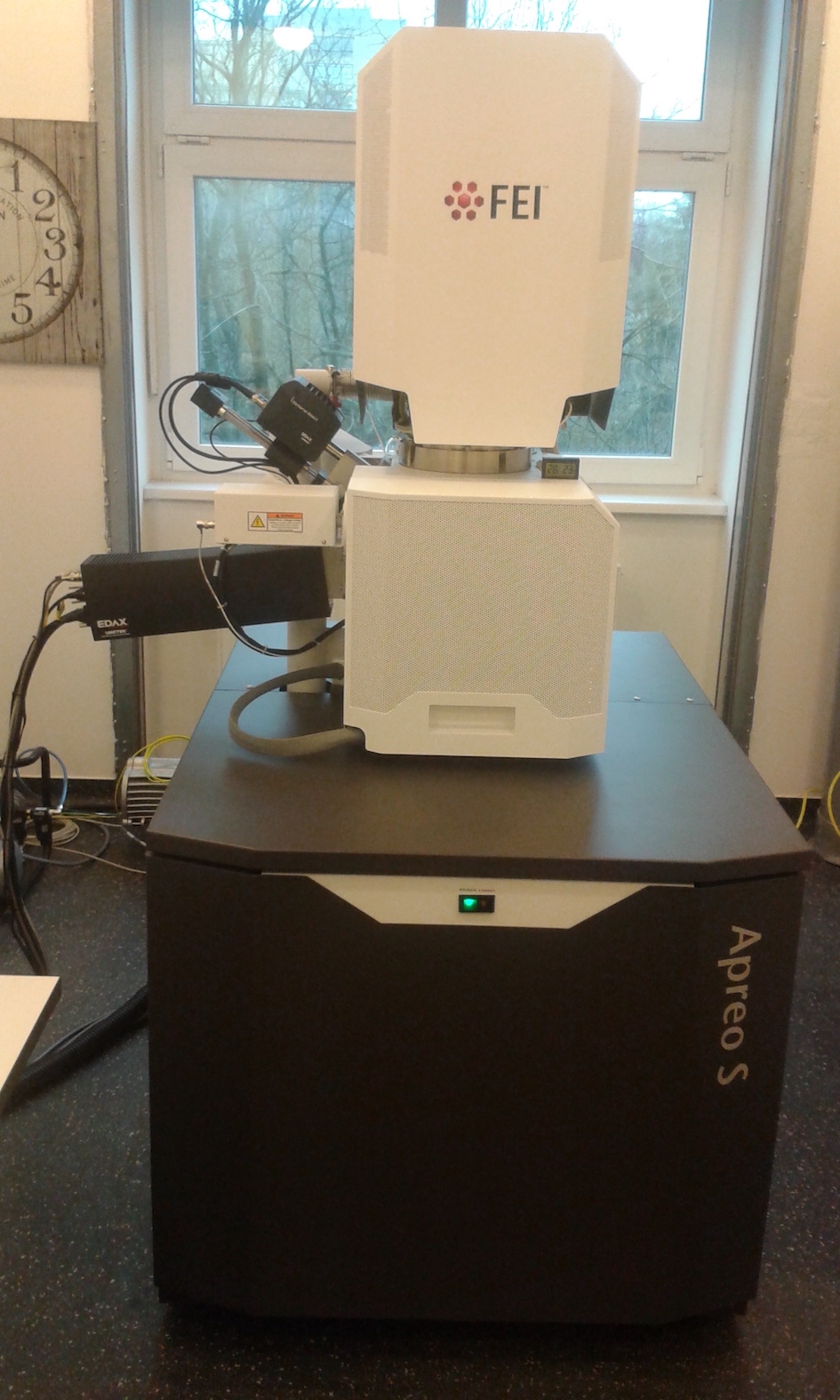 |
|
| Ion millling machine - November 2017 | ||
|
We have received the ion milling machine. Temporarily it will be placed in building C but its final place will be in the new TEM building. |
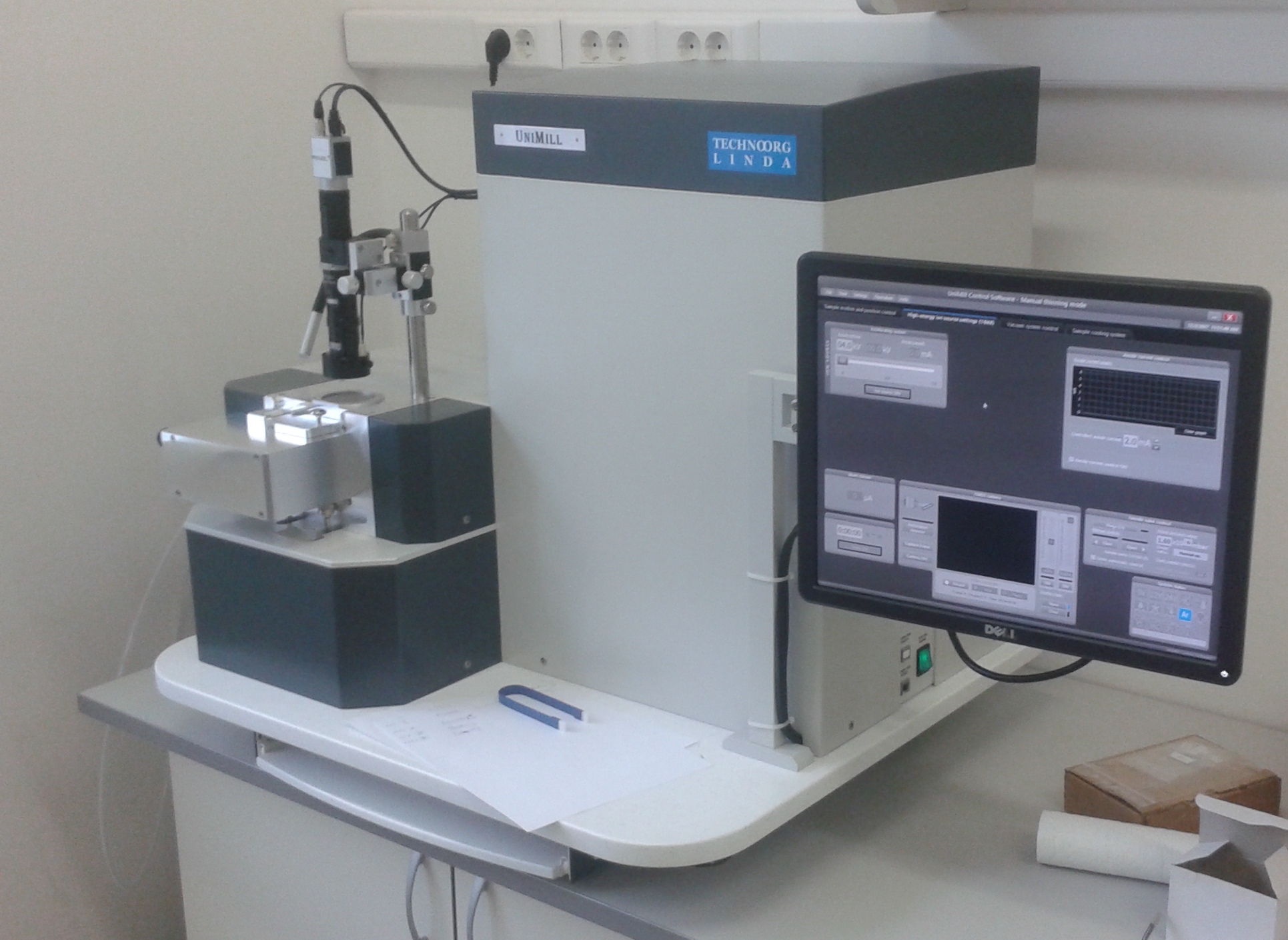 |
|
| Progress in Nanolab construction - Nov 2017 | ||
| The walls of the new TEM building are standing, except for the microscope room – the 50-ton concrete slab is done, this will ensure vibration-free operating conditions. | 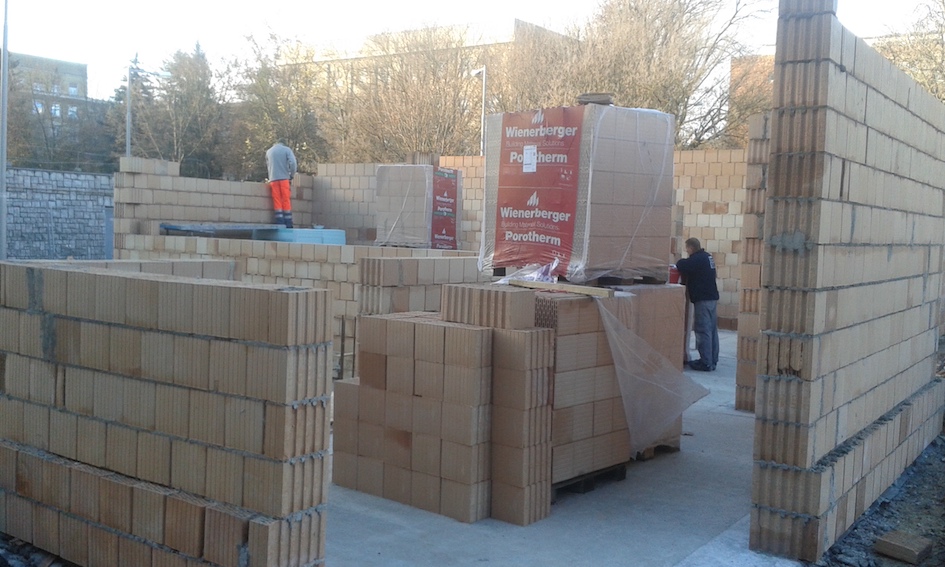 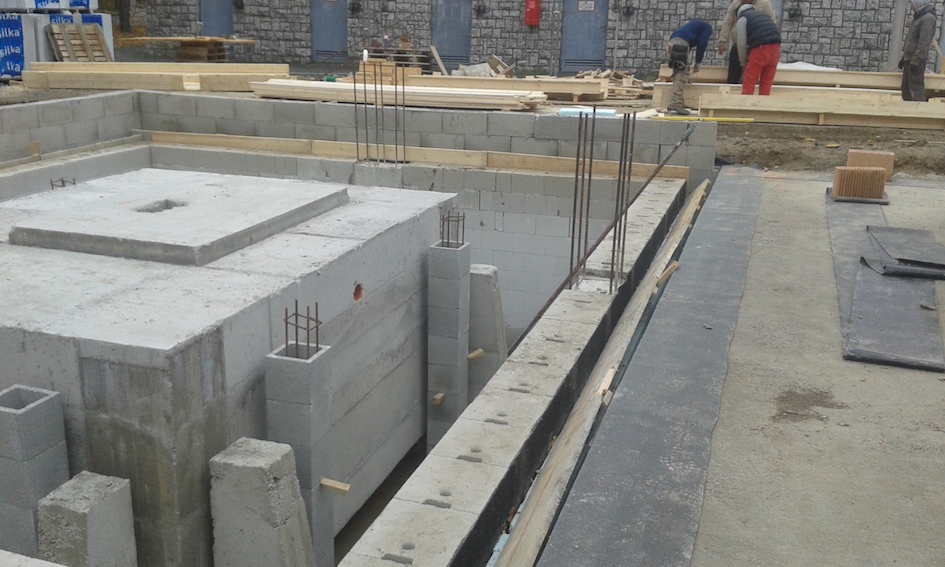 |
|
| The SEM is here - November 2017 | ||
| The Apreo FEG-SEM arrived! The microscope was successfully transported up to the 3rd floor in building C, to the Institute of Materials Engineering. Installation will take about 3 to 4 weeks. |  |
|

